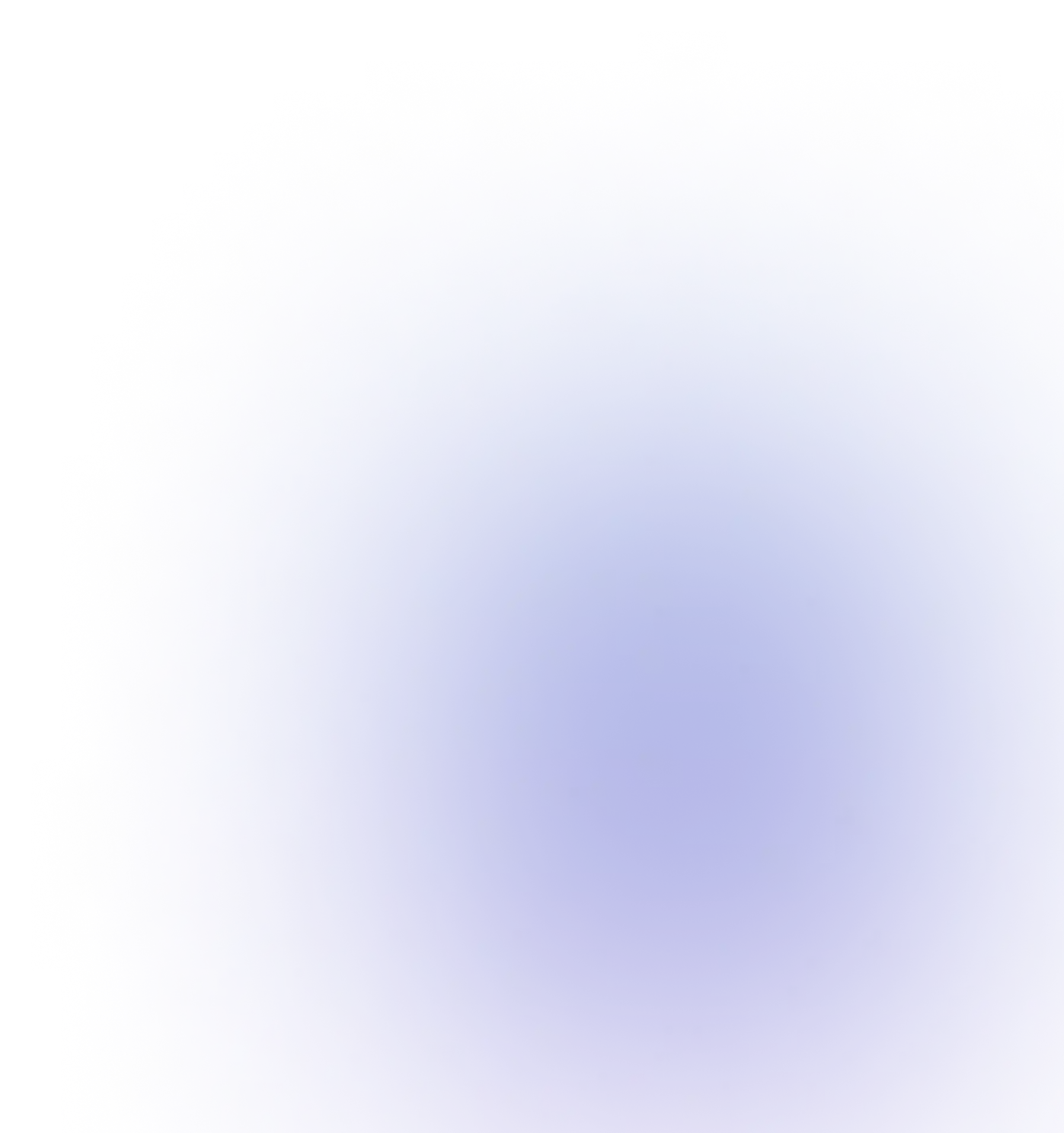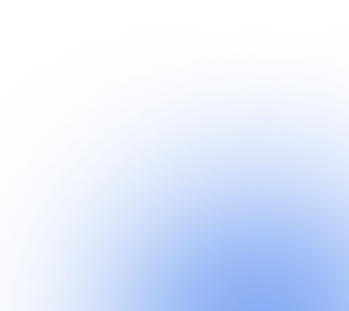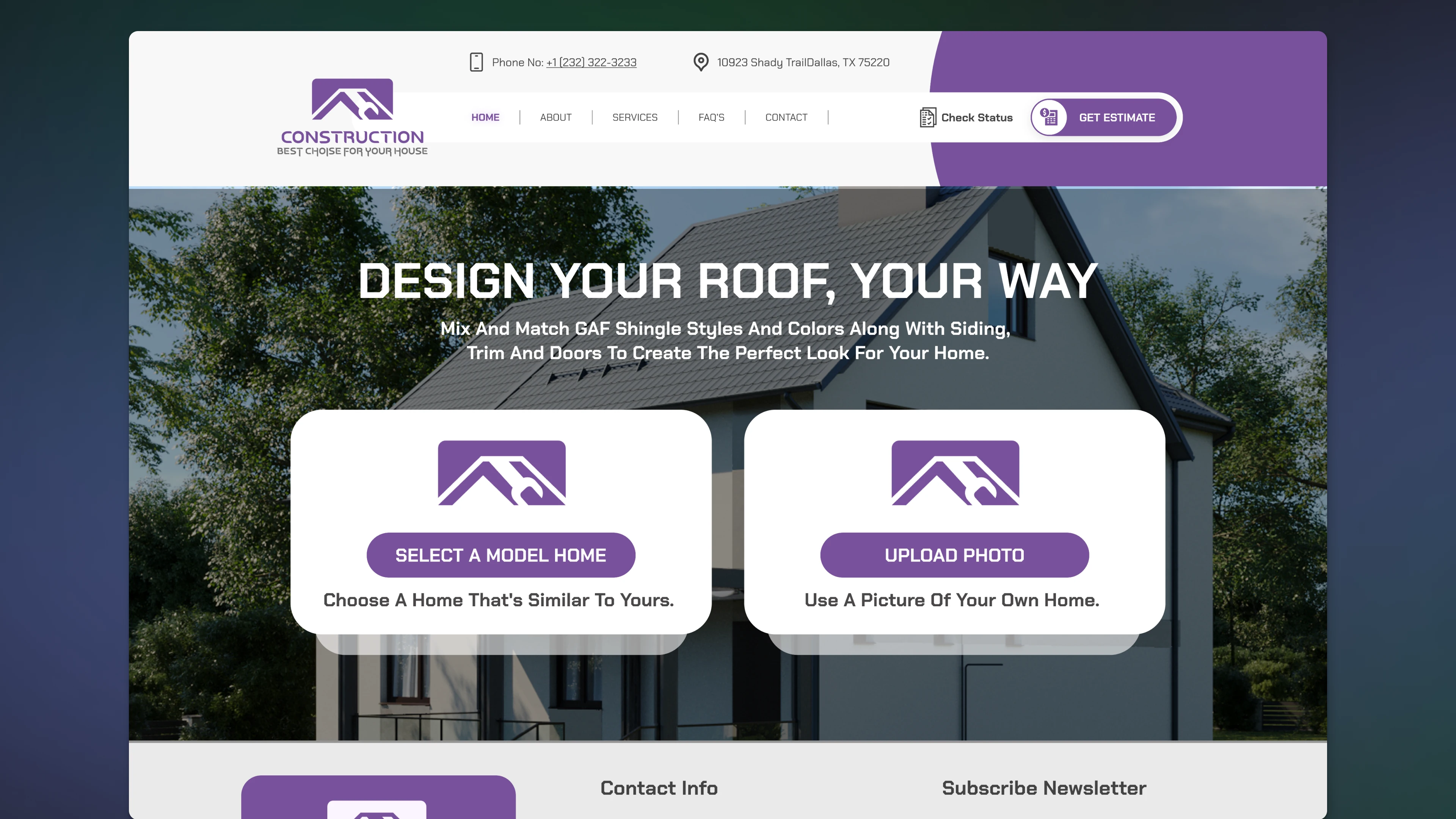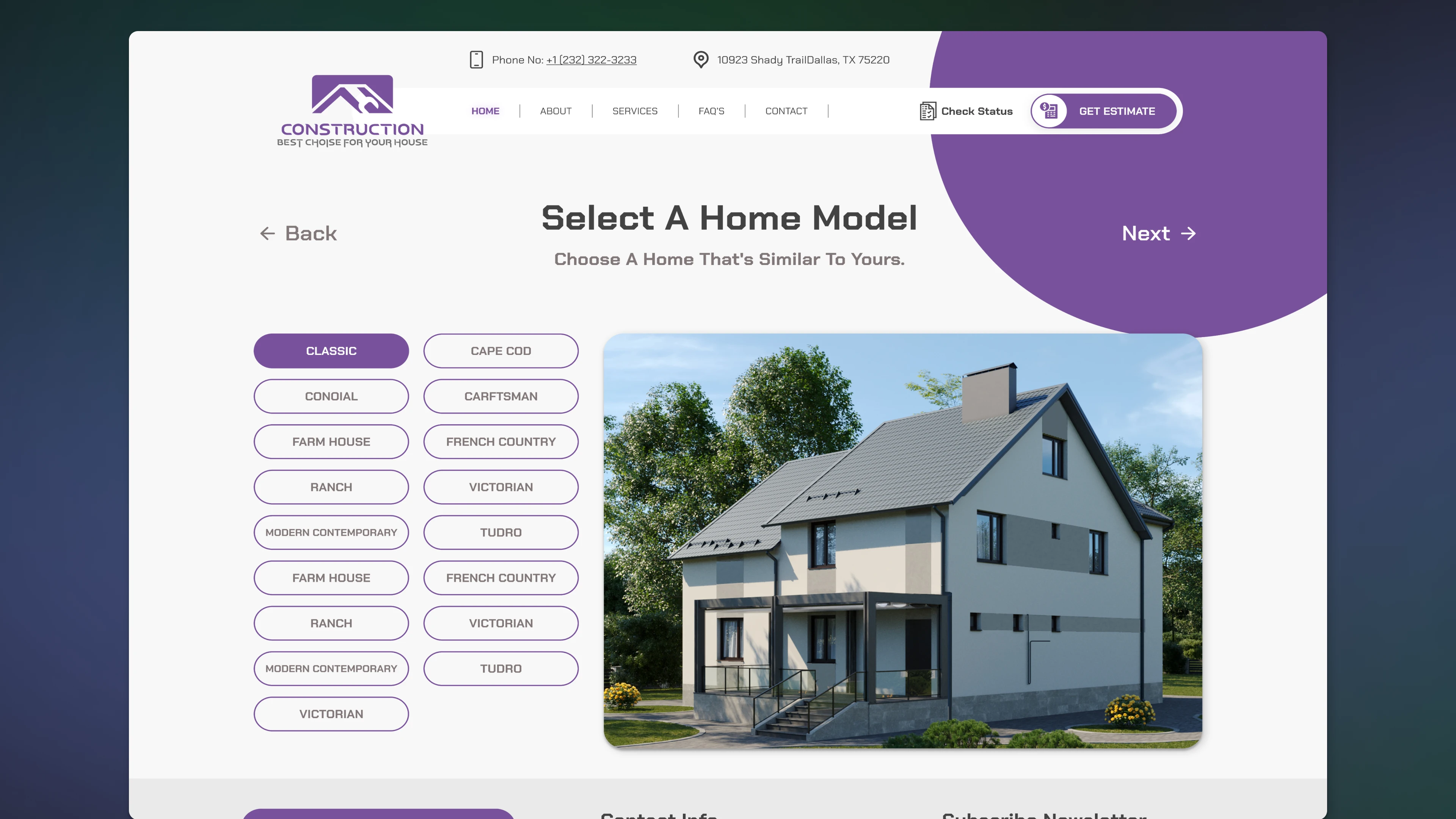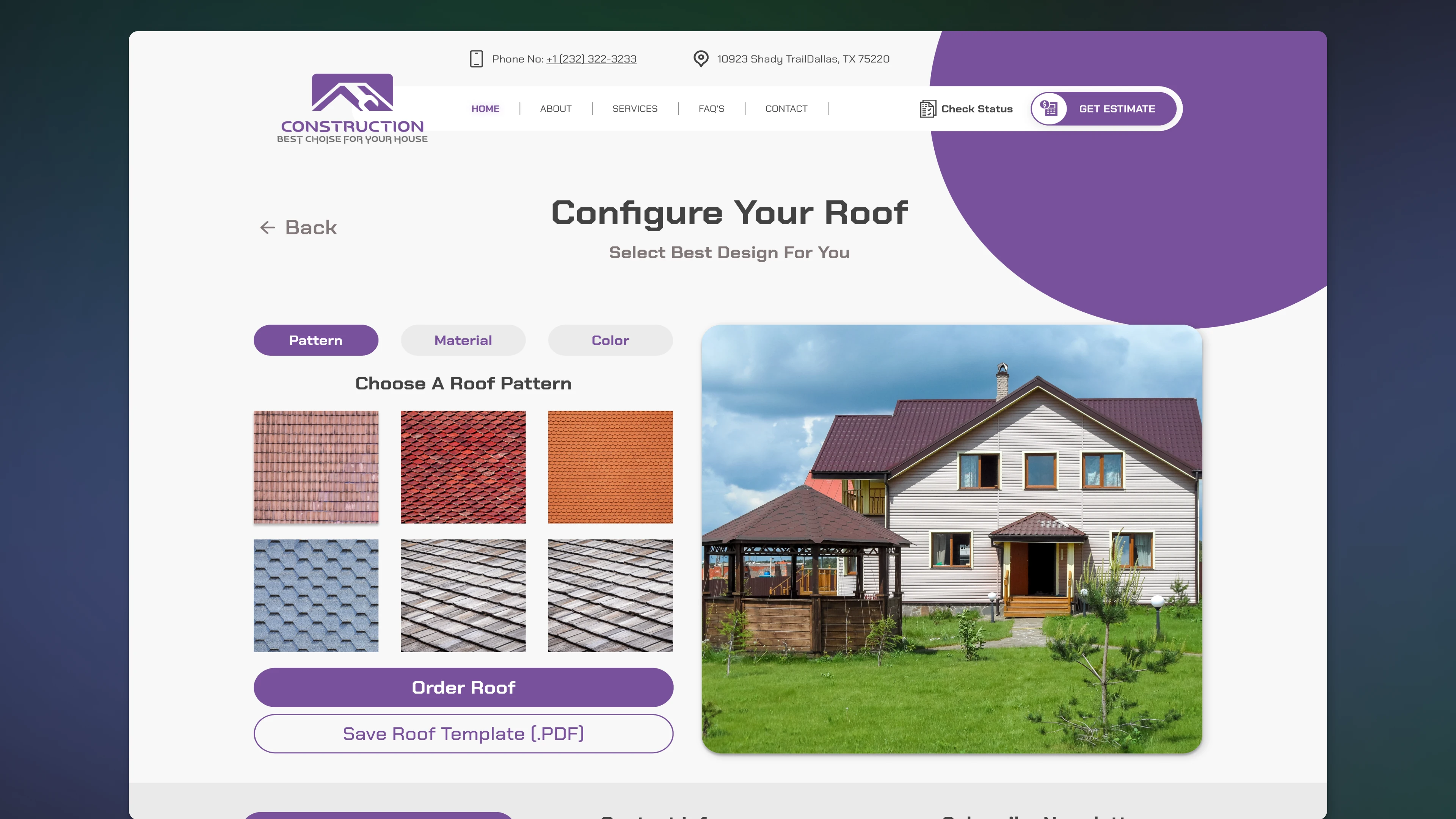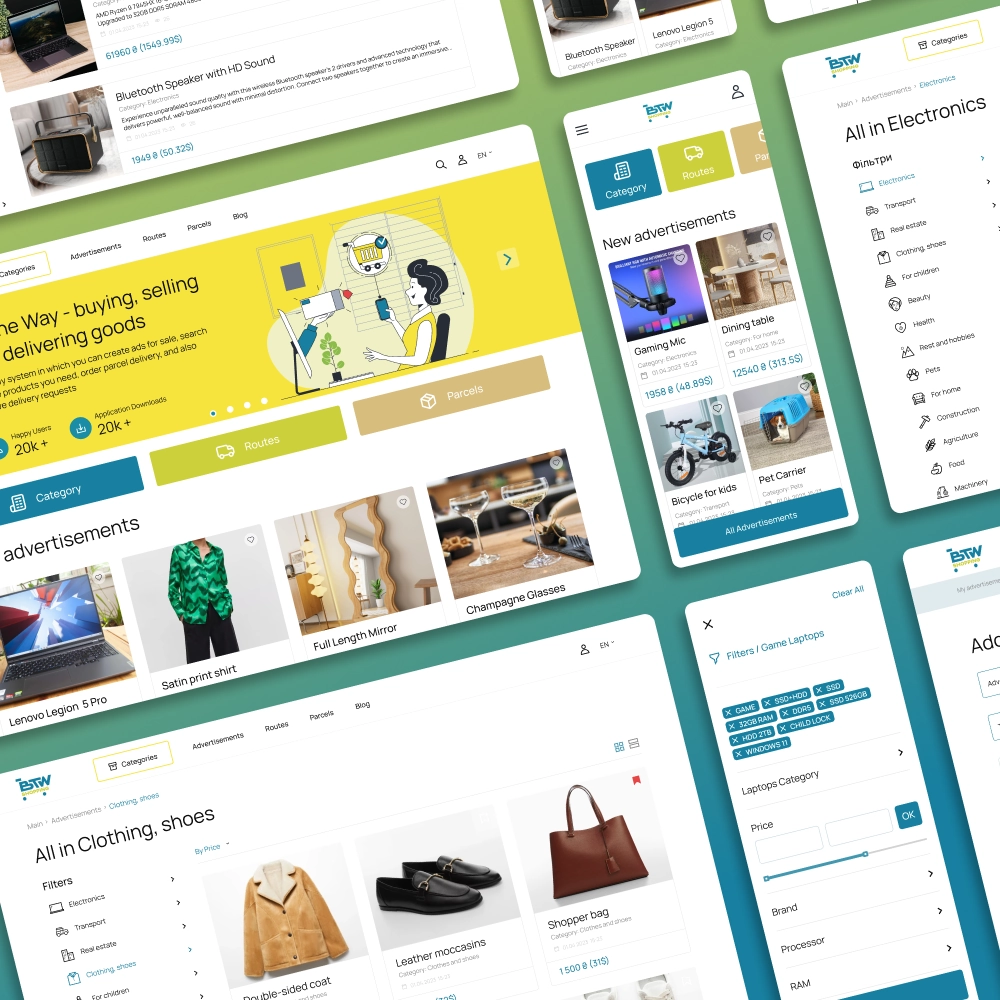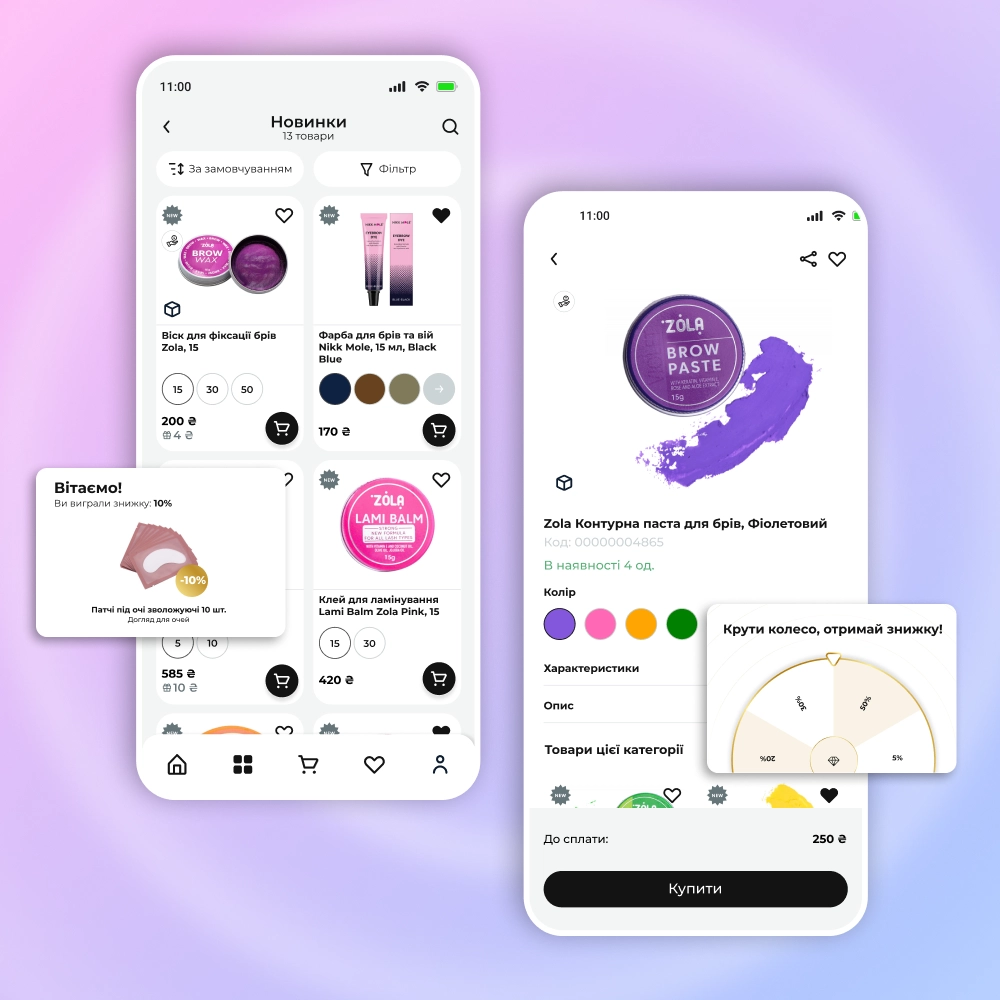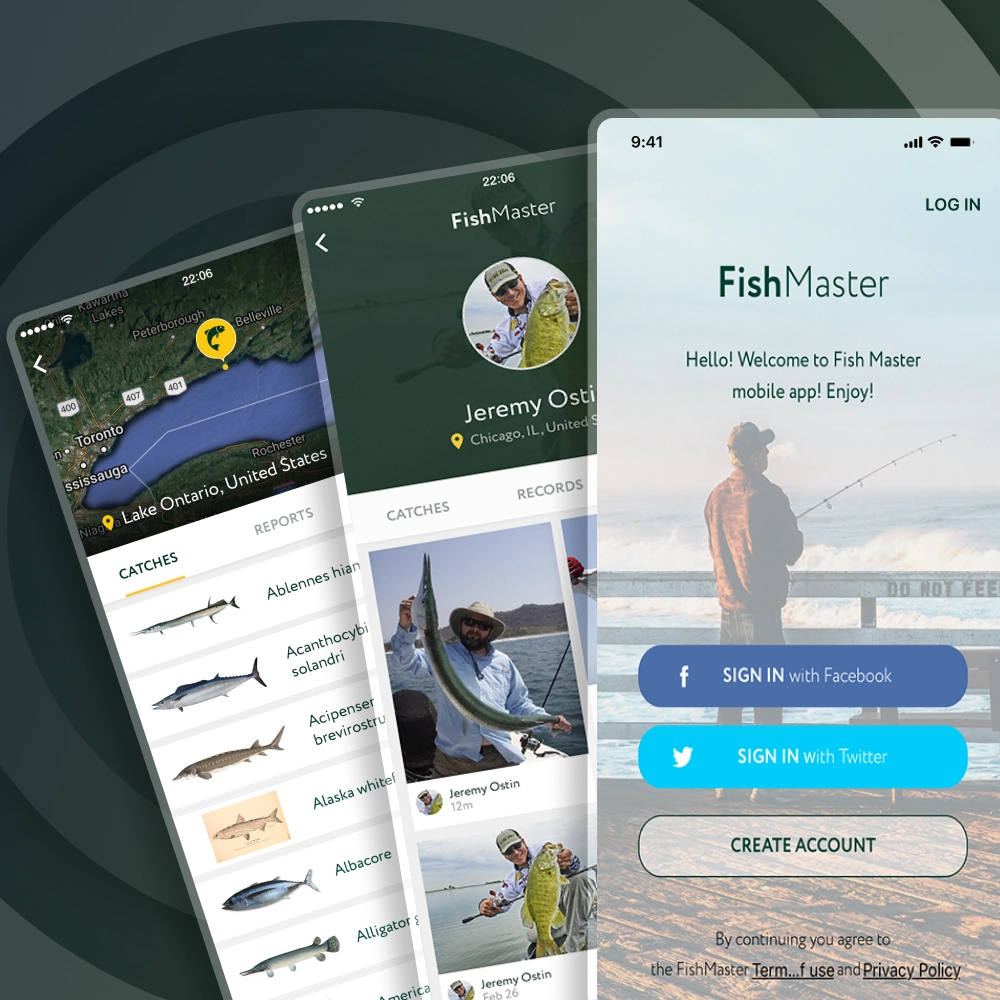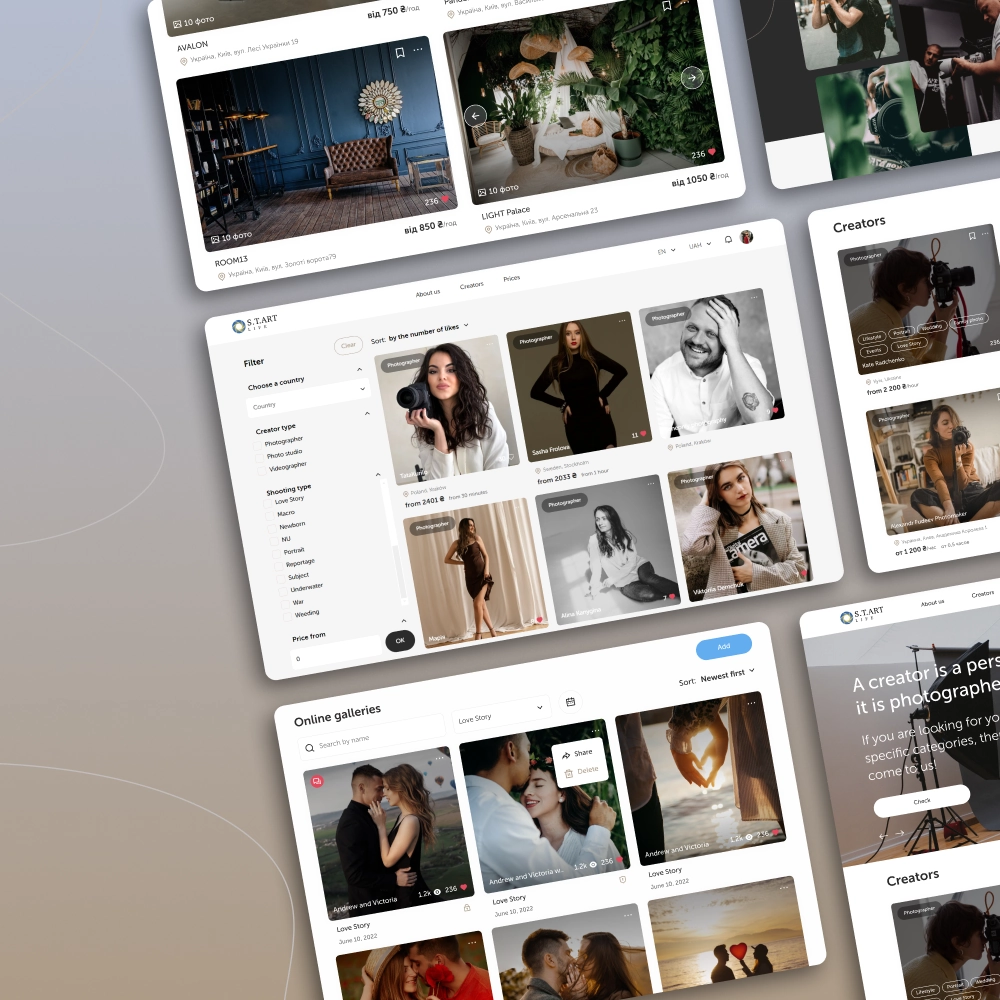

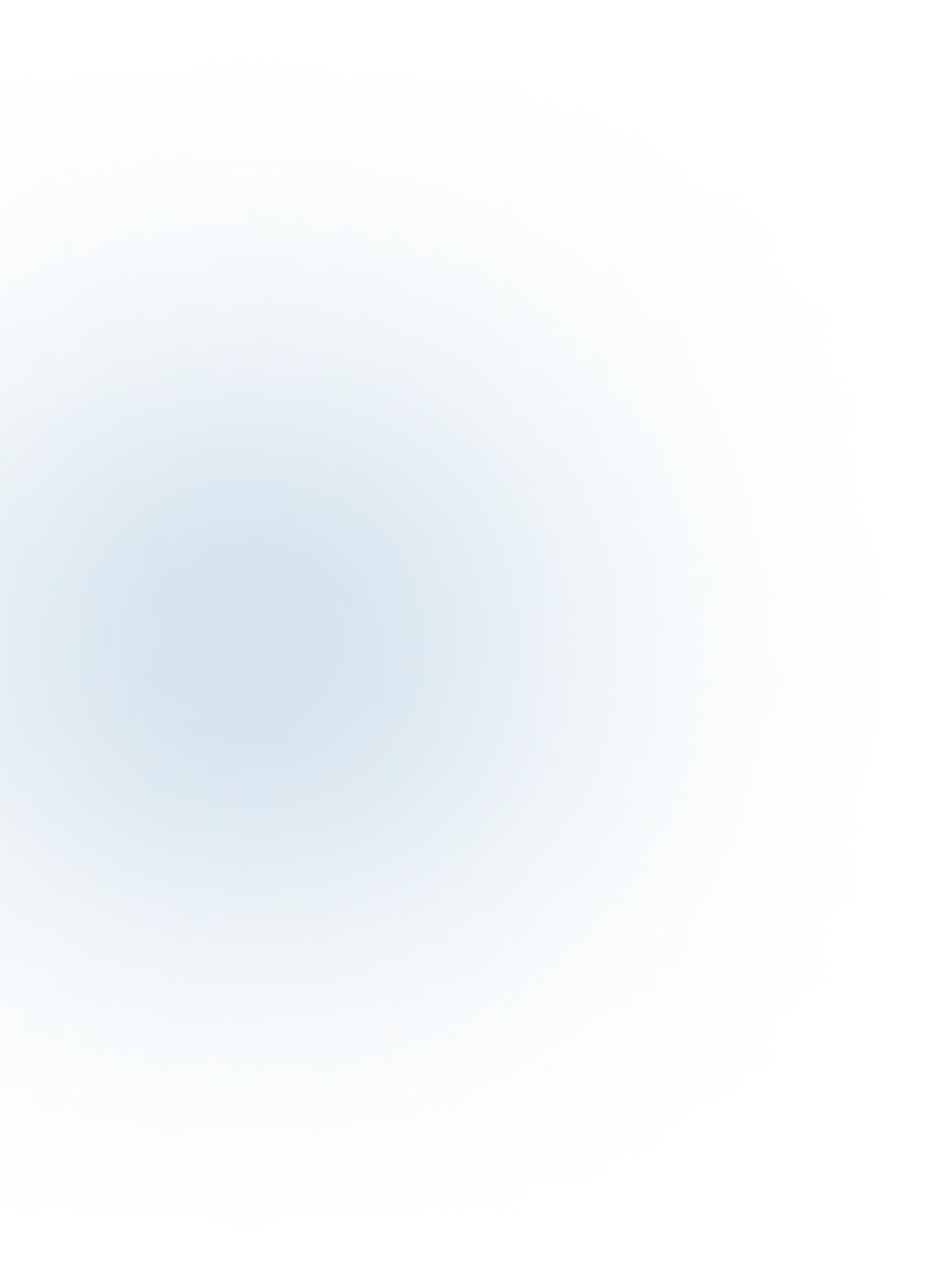






Roof configurator
Roof design is one of the most technically complex and responsible moments in construction. Mistakes at this level are expensive: geometry, slope, rafter system, selection of materials, ventilation, drains - everything is interconnected, each node is important, affects the final cost and operational characteristics of the object.
Companies that use the configurator for online roof design gain a competitive advantage already at the stage of client consultation. They show, and do not explain in words, do not recalculate manually (the system does this), and do not impose, but offer a choice with an accurate technical and commercial justification.
AVADA MEDIA team is ready to develop an online roof constructor of any complexity, which will become a key tool for the roofing business with individual projects, implementation of non-standard forms or a wide range of coatings and components.
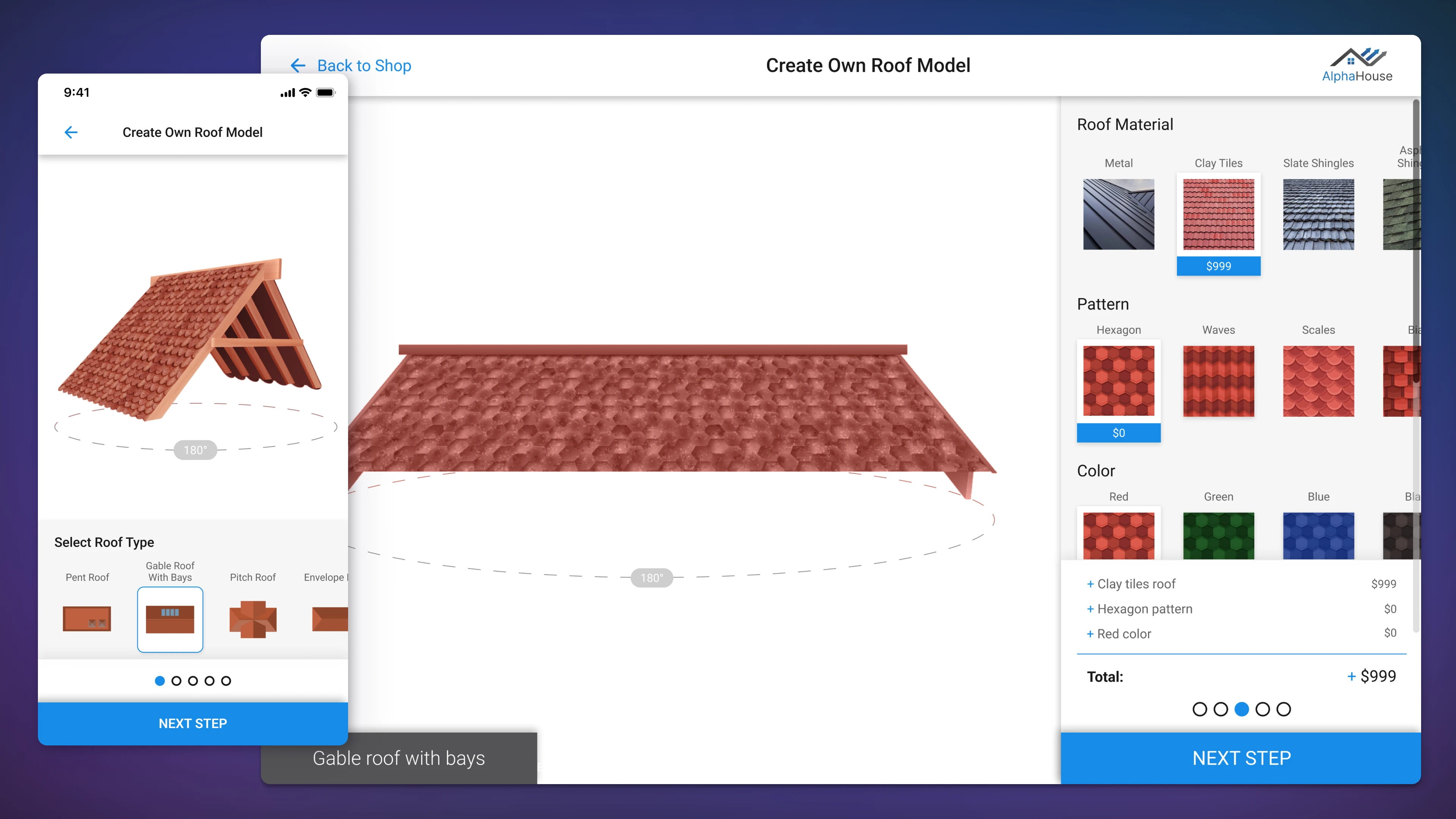
What are configurators for 2D and 3D roof design online
Online roof configurator is a custom web tool in which you can draw a roof project in an interactive interface taking into account all design, architectural and commercial parameters. The program is used both at the design stage and in the sales process, helps to visualize the roof structure, pre-calculate the amount of materials and generate a commercial offer.
Roof configurators are divided into two types:
- 2D roof configurator works in a two-dimensional projection (top view, side view, facade), suitable for typical calculations and quick generation of drawings, layouts, specifications. It is simple and fast, useful for dealer networks, managers and estimators.
- 3D roof configurator allows you to model a volumetric model that the user can change, rotate and scale in real time. It provides a demonstration of complex units, slope settings, selection of coating color and configuration of additional elements. It also provides the ability to evaluate how the roof will look on a specific object. This is no longer just a visualization, but a full-fledged digital model.
2D and 3D roofing editors are complementary programs that can be used both separately and in combination. For example, the user configures the parameters in the 2D interface, and the result is automatically displayed in a 3D projection. This approach maintains accuracy and speeds up the process without overloading the interface. If you are looking for a simple and quick solution, start with a 2D configurator. In the premium segment with individual projects or at the stage of conceptual sales, 3D is indispensable.
How does the roof design software work?
From a technical point of view, the online roofing configurator is a web application that works through a browser. It can be integrated with your CRM and website, materials catalog, price list, warehouse balances and can be adapted to any business processes: from sales in a showroom to online orders through a website.
Our custom online constructors are based on 3D graphics engines (WebGL, Three.js) and precise calculation modules. This makes the online house roof constructor not just a visual editor, but a professional tool for business, where accuracy is critical.
Functionality of 3D and 2D roofing configurators
The online roof configurator covers the key stages of interaction between the manager, client, designer and production department. Depending on the implementation goals, the functionality can be focused on engineering accuracy, visualization, calculation speed or automation of customer service. Let's consider the main features of the online roof configurator.
- Interactive design of the roof of the house
The user specifies the roof parameters: shape, slope geometry, inclination, ridge height, eaves length, rafter system type. The program interface displays the structure in 2D or 3D projection with the ability to scale, rotate and detail. In addition, when designing a roof online, the following are taken into account:
- architectural features of the building;
- the presence of attics, dormer windows, adjoining spaces;
- cutting and joining modules along slopes.
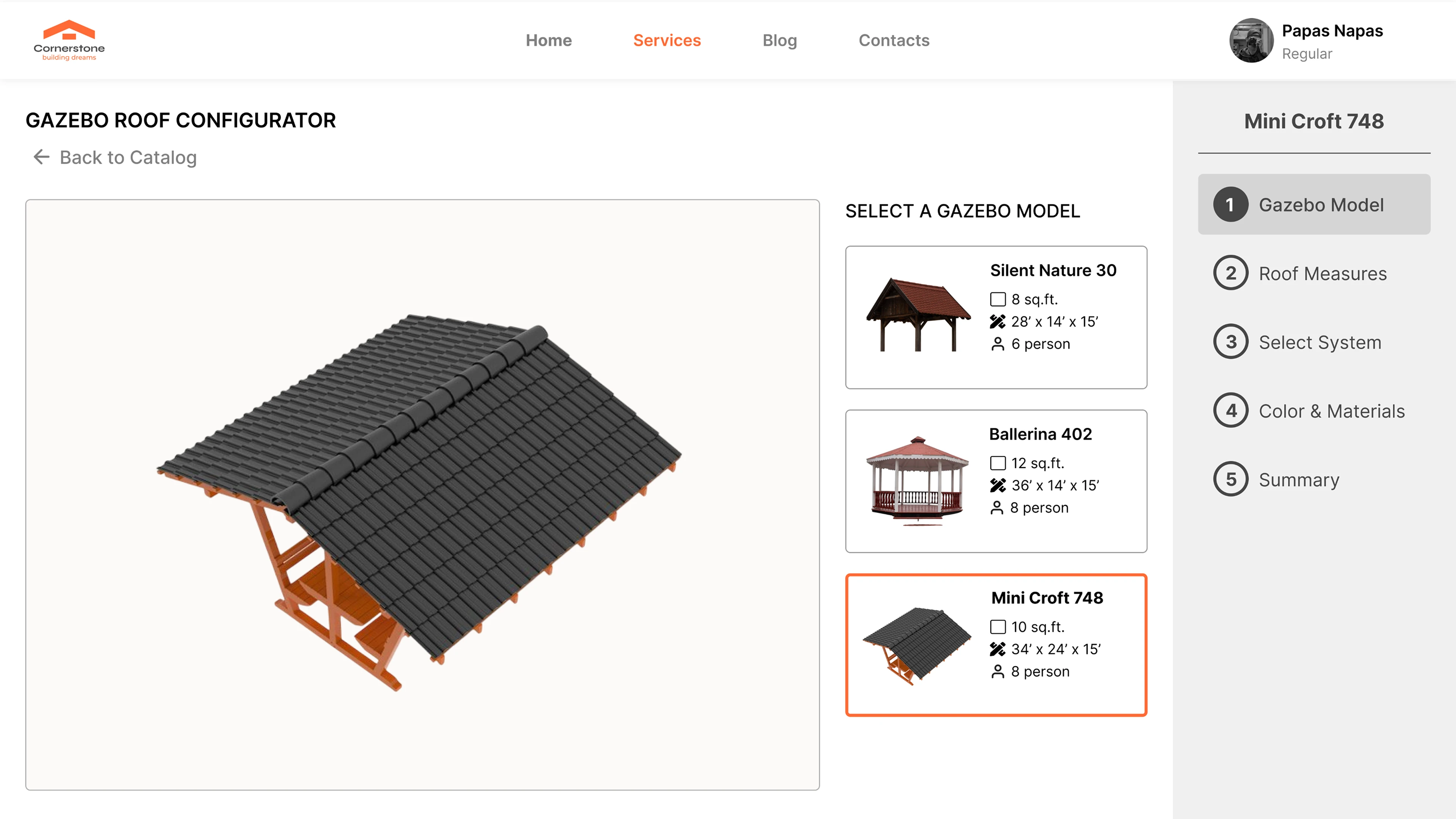
- Automatic calculation of materials and components
The individual roof creation program will accurately calculate:
- coverage area;
- required number of sheets/profiles;
- additional elements (ridges, valleys, wind strips, etc.);
- substructure and fastening elements;
- hydro- and vapor insulation.
In addition, the configurator is able to take into account technological parameters: allowance for trimming, overlaps, waste standards, packaging frequency and material specifics.
- Formation of specifications and commercial proposal
For a finished roof project, the online configurator can automatically generate:
- precise specification (in PDF, Excel, XML format);
- layout drawings;
- visualization of the roof with selected parameters;
- commercial offer with prices and your company logo.
- Integration with CRM, ERP, website and warehouse
Integration with internal and external systems reduces manual work and speeds up application processing. Data from the configurator can be immediately transferred:
- in CRM – to record the request;
- in ERP – to start production;
- to the warehouse – to reserve materials;
- to the website – if it is planned to create an open roof configurator for clients.
- Selection of materials
To create a roof project online in the constructor, the client selects:
- type of coating (metal tiles, seam, bitumen, ceramics, etc.);
- color, texture, profile;
- manufacturer and line;
- fittings and extensions.
All changes are immediately applied to the model. It is also possible to add a function for viewing the roof from different angles or under different lighting for a more accurate visual assessment.
- Saving and exporting
Projects are saved in your personal account, sent to the client by email, uploaded to the company's server, assigned a unique ID, and can be easily returned to for editing at any time.
Who needs a roof design program?
The online roofing configurator is used in various business models: from serial production to individual projects. It is critically needed where it is important to shorten the sales cycle, reduce the workload on staff and provide the customer with the opportunity to evaluate the result before the start of the project.
- Roofing manufacturers can standardize work with dealers, speed up specification generation, reduce errors in component selection, and transfer finished data to ERP or production.
- Construction and installation companies use the online constructor at the sales stage to quickly create a roof online, agree on options, show the client a visualization of the project and immediately generate a commercial offer.
- Dealers and sales representatives receive a convenient tool that allows them to work according to a unified scenario and does not require deep technical knowledge in roof design. It helps to quickly coordinate and approve the design of the roof of the house, form orders taking into account local prices and balances (if integration with the internal system or warehouse is configured), reducing the workload of specialists.
- Architects and designers use configurators in the conceptual planning process: as a means of assessing shapes, slopes and visual compatibility of different materials.
- In the eCommerce segment, a roof design program is a tool for improving customer experience. The user can independently create a roof design online, send the parameters to the sales department and receive a calculation without the help of a manager. This solution increases conversion, reduces the number of returns and consultations.
Thus, 3D and 2D roof configurators are equally useful in both the engineering and commercial parts of the processes. They allow companies to build a flexible, accurate and scalable model of working with clients.
Benefits of using an online roofing constructor
Designing a roof for a private home, commercial or utility facility in a 3D and 2D configurator immediately gives the business tangible advantages:
- saves time by taking on calculations, approvals and recalculations – those very “bottlenecks” that slow down transactions and overload staff;
- increases accuracy and reduces the risk of errors and shortages, especially when working with non-standard roofs;
- provides transparency for the client, simplifies the choice and speeds up decision-making;
- reduces the workload on the office: fewer telephone consultations, fewer explanations, fewer edits;
- becomes part of the digital infrastructure and scales along with the business (subject to integration with CRM, website or production system);
- increases competitiveness – while some continue to calculate specifications manually, companies with a configurator close deals faster, make fewer mistakes and offer clients a modern level of service even in technically complex projects.
Stages of development of online roof constructor
Our goal is to develop a digital tool that will logically fit into the chain of sales, production and logistics. Therefore, we adhere to a clear algorithm when creating an online constructor.
Analysis and technical specifications
Each project begins with studying your business processes, product line, roofing types, material features, and configuration options. We agree on technical and visual usage scenarios : who will work with the configurator, what data is needed as output, where it will be placed - on the website or in the CRM.
Architecture of logic and UX-prototype
At this stage, the team works out the logic of the roof design program: roof shapes, acceptable material combinations, installation rules, consumption and trimming rates, options for additional elements - this is the foundation for future calculations and interactions within the system. Next, we create a UX prototype , that is, an interactive diagram of user routes and interface. It is important that the structure and logic are intuitive for all roles, in particular managers, dealers and the end user.
UI design and visualization
We develop the visual style of the program: color schemes, icons, typography, 3D or 2D rendering of elements. We separately work out adaptability for screens of different devices.
Development and integrations
The user interface (frontend) of the online roof constructor is implemented using Three.js for 3D and SVG/Canvas for 2D visualizations. This stack provides smooth graphics, high interactivity and adaptation to any device. The backend is built on Node.js, Laravel or Python (FastAPI) - depending on the project's tasks. It is responsible for calculations, storing configurations, access management and integration with external systems.
If necessary, we implement automatic generation of estimates, PDF files, commercial offers, orders and drawings. We configure integrations with CRM, ERP, generation of specifications in PDF, warehouse systems and email services via API or GraphQL.
Testing and launch
We test the roofing configurator with real scenarios: calculation validity, user error tolerance, visualization accuracy. We conduct load testing and optimize the response.
Training and technical support
We train the staff, if necessary, we record video instructions. After the launch, we stay in touch and offer technical support for the project: we expand functionality, add new configurations or integrations, consult and fix errors.
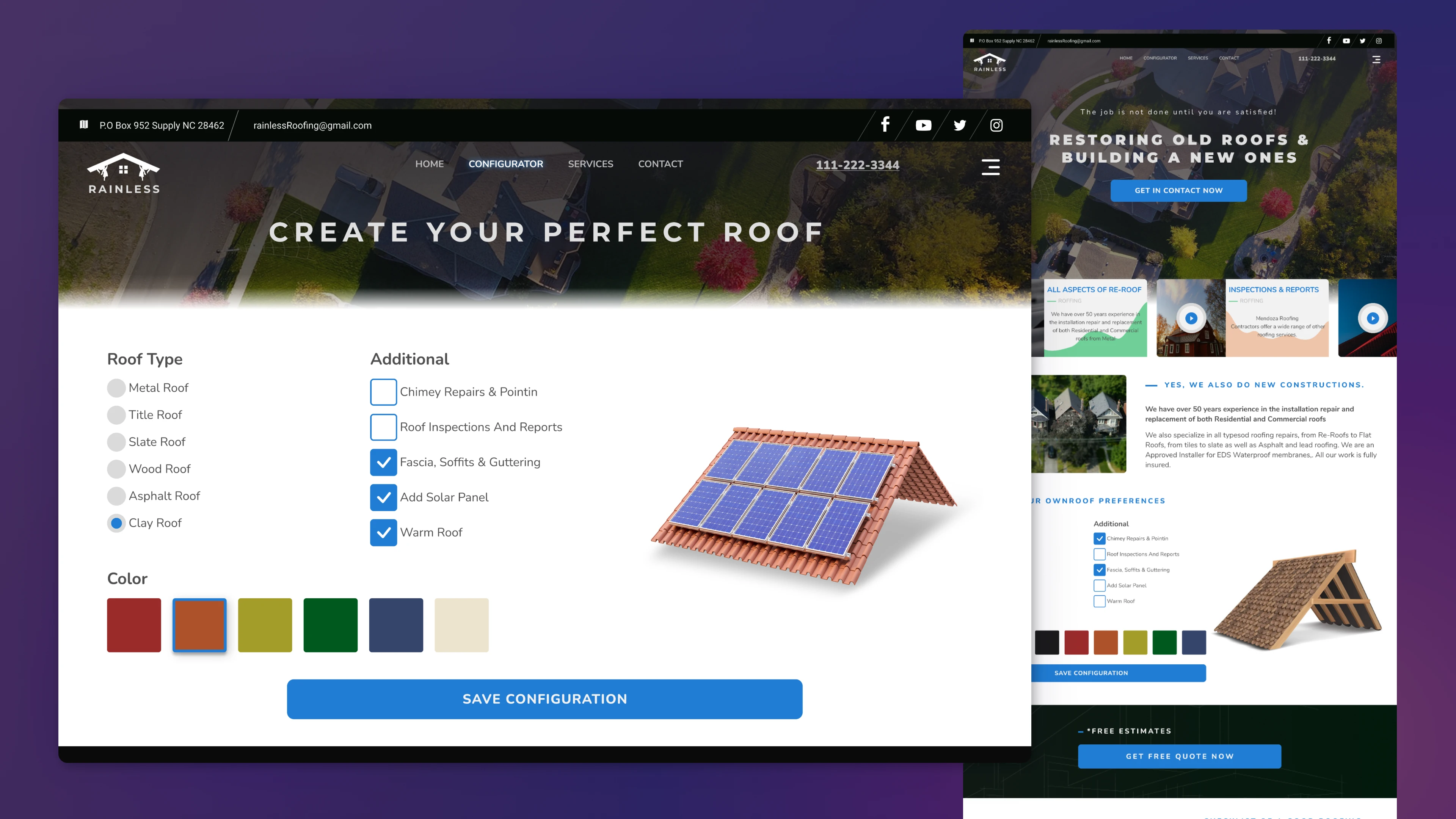
Where to order a configurator for 3D roof design online
Our team offers development of a custom online roofing constructor that will accurately take into account the features of your product range, processes and sales specifics. We understand how the roofing materials market works and create interfaces that are convenient for both staff and the end user.
If you decide to order a 2D/3D roof configurator from AVADA MEDIA, you will receive:
- a solution fully adapted to your business, taking into account technical limitations and assembly logic;
- realistic visualization of orders with support for textures, colors and additional components;
- stable architecture and backend ready for integration with other systems;
- support, consultations and development of the configurator as new tasks and trends emerge on the market;
- transparent process and clear cost without hidden stages and imposed functions.
The roof design software will fit seamlessly into your digital ecosystem and help automate key processes: from configuring the rafter system to automatically calculating the covering material taking into account geometry, angles, overhangs and actual warehouse balances.
Questions and Answers
-
Is it possible to add other roofing materials and accessories to the configurator later?
We will fully adapt the program to your catalog, then you will be able to update or expand the range as needed. The data will be loaded manually through the admin panel or automatically if API integration with your management system, website, warehouse, etc. is configured.
-
How many users can work in the online roof constructor at the same time?
There is no limit on the number of users. Regardless of how many people work in the program at the same time, it remains stable and productive.
-
Do you need a powerful computer or special software to work?
The roof configurator works in the browser and does not require installation. Employees and clients can make a roof project online both on PCs and on laptops or tablets.
-
Can roof design software be used only within a company?
It is possible to create a roof constructor exclusively for internal users – managers, designers, dealers. If necessary, we will set up authorization, delimitation of rights and synchronization with internal accounting systems.
-
Is the configurator adapted for mobile devices and tablets?
We are developing an adaptive interface, so the online configurator will be displayed correctly on any screen. This is convenient for field specialists, surveyors or those who work with a tablet at the site.
-
Is it possible to save a house roof project online and continue working on it later?
We implement the ability to save projects and subsequently edit them, version history, duplication and export. This is convenient for teamwork, clarifications with the client or preparation of a commercial proposal.
